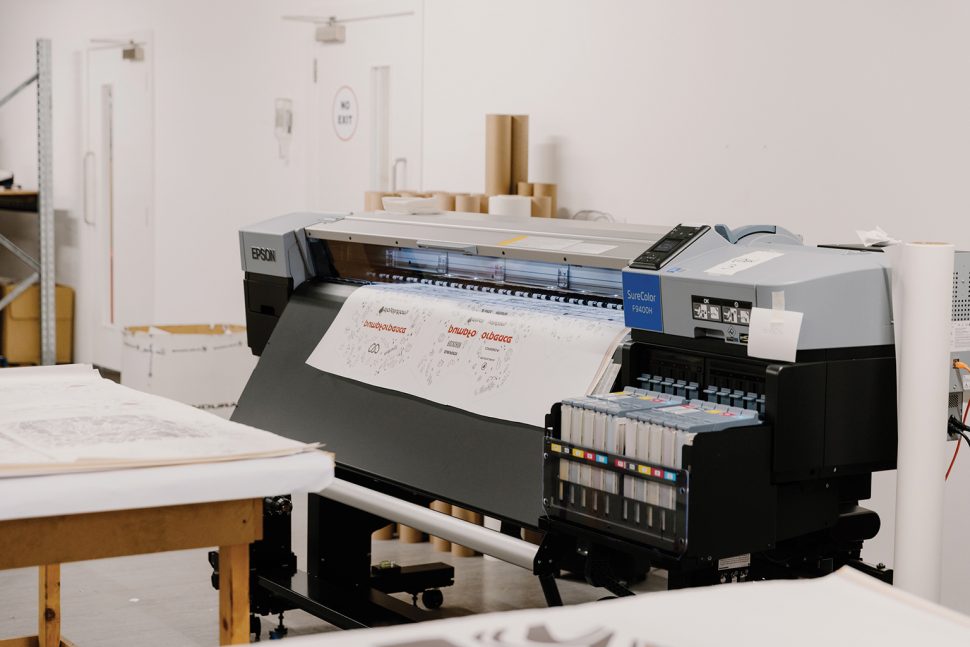Cyclist
Reduce, reuse… cycle: Inside Endura’s headquarters
When Endura started in 1993, the focus was on creating cycling apparel that could cope with the Scottish weather conditions familiar to the company’s founder, Jim McFarlane. Over the next 30 years it grew from a niche brand into a clothing giant that sponsored one of the biggest cycling teams in the world.
‘I remember in 1999 when we were in the local paper because we turned over a million pounds,’ says factory manager Stuart Laidlaw, Endura’s longest-serving employee, having joined the company in 1996. ‘At our height we turned over £50 million. I’ve seen us grow pretty big.’
It’s nearly December when Cyclist visits Endura’s headquarters in Livingston, just outside Edinburgh, where it also produces custom cycling kit in its certified carbon-neutral facility. The machines and corridors are noticeably less bustling with the sort of activity we might have expected.
‘December is a quiet time of year for us,’ says Laidlaw. ‘When we made kit for Movistar that was a different story. Every machine in here would be whirring away.’

Endura sponsored Movistar from 2013 to 2019, a period when the team racked up Grand Tour victories, Monument wins, a World Championships victory with Alejandro Valverde and the Hour record with Alex Dowsett.
‘When we had the Movistar team, this would be a completely frantic time of year,’ chimes in Katrin McDonald, Endura’s global PR manager. ‘We would have a kit-fitting session in November and then production would go wild in December so that the riders would have their kit for their first races of the new year in January.

‘It was great to have them – they were fascinating and they gave us lots of feedback about products. A lot of the road products we have developed are based on their testing. But it was also a massive expense and, as a marketing exercise, if you asked people in Britain who the kit sponsor was of the Movistar team, nobody would know.’
In it for the long run
While the WorldTour team sponsorship didn’t stick, Endura’s focus on producing durable, long-lasting kit that is environmentally conscious has. Endura was one of the first brands to stop using PFCs (perfluorochemicals) in waterproofing treatments, and the brand has been PFC-free since as far back as 2018.
‘Durability and lifespan are fundamental aspects of sustainability and we’re making kit that lasts so people don’t have to keep buying new things,’ says Michelle Middleton Milne, the company’s product development manager. ‘I saw somebody riding the other day with a jacket that was here when I started 12 years ago.’

Middleton Milne is involved in all aspects of sustainability in garment production, including sourcing, supply chain and end of life. She says that when Endura designs and creates a new product, it weighs up three factors: sustainability, cost and fit. But which is most important?
‘That’s the age-old question,’ says Middleton Milne. ‘In the early stages you’re given a target price for a new product, and we look at what materials to use, what features to include and what the customer is expecting, all to fit within that price range.
‘The sustainability criteria have shot up in terms of importance in the last few years due to expectations from our customers, from the industry and from legislation, so that tends to be our first question when we are sourcing: how sustainable is this fabric? Sustainability is a key factor but that contradicts cost, so it’s a wider discussion and it’s not black and white.’
It’s not just the sustainability of the source material that has to be taken into account.

‘When we’re designing kit, we’re thinking about what is going to be in place to stop a product from going to landfill, so circularity is overtaking sustainability as the word of choice,’ adds Middleton Milne. ‘There is a shift in the industry towards focussing on what happens at the end of a product’s life, but at the moment there is not enough recycling infrastructure to make this straightforward. Textile recycling is still at the early stages, so we design for what we think will be in place and make informed judgements, but things are not quite ready yet.’
It’s just not natural
Endura’s clothing range features a lot of synthetic fabrics, which might seem to go against the whole environmentally friendly ethos, but is deliberate.
‘There is the expectation that natural fibres are better than synthetics in terms of the environment but that’s not necessarily the case,’ says Middleton Milne. ‘In our clothing, synthetics tend to be prevalent, and the main reason for that is performance. Synthetics will tend to wick quicker, dry quicker and have better durability, whereas natural fibres tend to hold water so can be uncomfortable and make you feel cold.

‘I’m not saying all natural fibres are not better than synthetics, but you have to take into account how natural fibres are made. Cotton, for example, uses a huge amount of water. There are questions around soil health, whether the crops could be used for food rather than textiles, what chemicals are used to extract cellulose from a plant – it’s not straightforward. It’s quite a misconception that natural fibres are better for the environment.’
For Endura’s new products for 2024, recycled fabrics are a strong focus but the complexities continue when comparing the quality of recycled fabrics with virgin yarns.
‘The argument is that the more you recycle a fibre, the more its quality reduces,’ says Middleton Milne. ‘The polyester we’re recycling, for example, is coming from post-consumer PET bottles. That quality of fibre tends to be quite good when it’s made into a textile fibre. Because packaging is actually a higher quality than textiles, recycling it means it’s still a good quality.

‘Nylons tend to be pre-consumer recycled fabrics, made from waste or excess products from the manufacturing process, but we’re also seeing some post-consumer materials coming in, such as recycled tyres and fishing nets. There’s lots of work to be done within this area in the future. As part of our development process, fabrics go through stringent testing to ensure that they are suitable. All of our new products have recycled fabrics within them, but they might not necessarily make up the entire garment.’
Looking at every angle
The reduction of Endura’s operational impact on the environment is still a work in progress and the brand is currently quantifying its operational carbon footprint across all its activities. As part of its emissions reduction programme, Endura pledged to plant one million trees every year starting from 2020 and to date has planted nearly four million. However, one area the manufacturer says needs looking at is the dyeing processes at mills.
‘Most sustainable goals will be to reduce the amount of water used and the chemicals that are used that then go back out into the water system, which is where the dyeing process comes in,’ says Middleton Milne. ‘Dyes and water are closely related because they work together. The fabric-dyeing process will tend to use a water bath; the fabric goes down into the bath, the dye attaches to it then you’re left with a lot of water with dye in it at the end of the process, which from my understanding can’t be separated. That’s the issue. There is a focus on how to use less water and less dye and it’s an area we are looking into.’

All this discussion begs the question: why make anything at all? Do we really need all this cycling kit?
‘True, the way to fix the problem is to not make things,’ says Middleton Milne. ‘We have conversations about not making kit for the sake of it or just because it would be nice to have. There needs to be a reason for the product to be here.
‘I don’t think any product is kind to the environment per se, but it’s about making products that are kinder and making kit that lasts. That’s what is frustrating about the topic of sustainability: there’s no good answer. You just have to do the best for what you think is right.’
By the numbers
Calculate, crunch and recycle
1993
Year Endura was founded
92
Number of staff currently based at the Livingston site
2018
Year Endura went PFC-free
7
Number of seasons Endura sponsored Movistar
3.5
Number of weeks Endura had to make Movistar’s kit for each new season
2020
Year Endura committed to planting one million trees every year
3,990,960
Trees planted since the One Million Trees project began (and counting)
3
Percentage of Endura products made in Scotland

Laws of nature
Are brands going to have to prove their green credentials?
There are plenty of brands in the apparel world that claim to be sustainable, but if the UK adopts a similar approach to the French, they could be obliged to prove it.
France has recently introduced an anti-waste law, known as La loi anti-gaspillage pour une économie circulaire (‘the anti-waste law for a circular economy’), which came into effect in 2023. The law requires every product marketed in or imported to France after that date to be accompanied by sustainability and circularity information. From January 2024, companies generating €20 million of revenue annually will be required to comply with the law.
‘I think it’s a great thing to have legislation on transparency and to have to be accountable for where things come from,’ says Michelle Middleton Milne, product development manager at Endura. ‘I think it will change the industry for the better. ‘Whatever industry you’re in, whether it’s food, plastic packaging or clothing, there is a responsibility to educate people and to make it easy for consumers to know what to do with a product at the end-of-life stage. The issue is industry-wide and involves everybody within the process, from mills to the brands, collectors, sorters and recyclers.’
• This article originally appeared in issue 149 of Cyclist magazine. Click here to subscribe
The post Reduce, reuse… cycle: Inside Endura’s headquarters appeared first on Cyclist.
